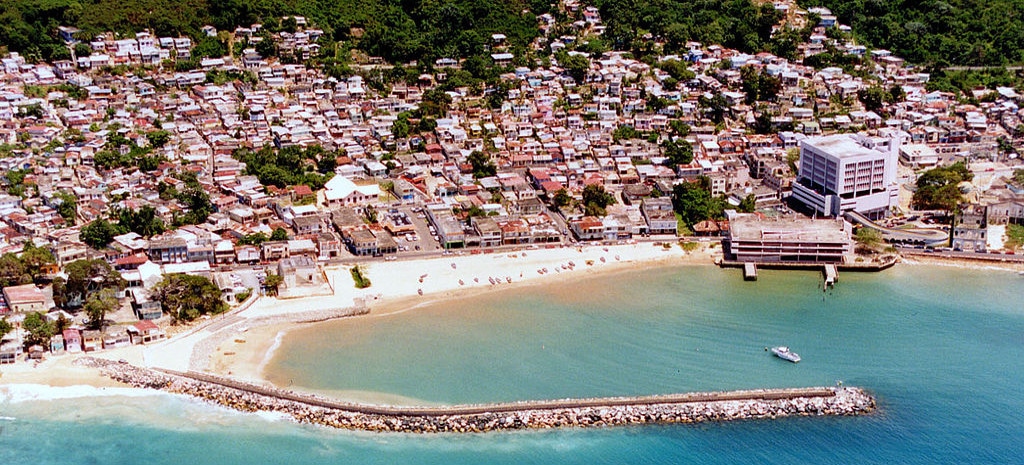Puerto Rico’s Chamber of Commerce and Association of Mayors have endorsed a report calling for 50 percent renewable electricity by 2035 and 100 percent by 2050. Other endorsers include 12 Puerto Rico industry associations, academic institutes and nonprofits. Their stance is counter to the new fossil infrastructure plans of Puerto Rico’s electric utility, PREPA.
Now at 98 percent fossil generation, Puerto Rico has electric rates second only to Hawaii’s. While no study has estimated the solar savings potential for Puerto Rico, a study of Hawaii’s grid, which like Puerto Rico’s depends on costly fossil fuels imported across an ocean, found that a fast ramp in solar installations could save $3-7 billion. And last year, AES proposed solar-plus-storage for Puerto Rico at 11 cents per kilowatt-hour—40 percent less than wholesale electricity costs.
The Puerto Rico collaborative report calls for “no new investment that would lock in expensive long-term fossil generation contracts” that could limit renewables investments. Existing fossil fuel plants, the report said, “should be retired as soon as possible,” with each facility having a specific phase-out deadline.
To help ensure that the renewables goals are reached, the report highlights the need for an independent regulator with enforcement powers, as well as a “modern regulatory framework” and an integrated resource plan (IRP).
PREPA was not regulated until 2014, when the legislature created the Puerto Rico Energy Commission (now the Energy Bureau), with the authority to approve, reject, or modify the utility’s IRP. The report recommends granting the Energy Bureau enforcement authority via incentives and penalties, an approach used in performance-based regulation. The report notes that Hawaii, which is pioneering such regulation, could be a model.
The report calls for an “initial IRP effort” that presumably would reflect the 50 percent by 2035 renewables target. Because PREPA, which is heavily indebted, currently plans to sell assets, the report calls for any resulting privatization contracts to “comply with the IRP.”
Past planning has been problematic, as PREPA did not meet Puerto Rico’s renewables standard of 12 percent by 2015.
The collaborative report, including its goals, results from a consultative process intended to build trust among participants and foster collaboration. Each participant was interviewed, then received anonymized notes from all participant interviews, and joined in four days of workshops facilitated by Puerto Rico’s Institute for Competitiveness and Economic Sustainability and Colorado’s Rocky Mountain Institute. The workshops included presentations by industry and academic experts. The report went through several iterations to gain agreement and endorsements.
The timing of the report, available in both Spanish and English, permits its findings to inform discussions as Puerto Rico develops a new energy policy and regulatory framework by the end of the year, as required under State Act 120.
Early next year, to further promote discussion of solar and storage opportunities, the Smart Electric Power Alliance (SEPA) and the Solar Energy Industries Association (SEIA) plan to hold a conference in Puerto Rico, in collaboration with the Solar and Energy Storage Association of Puerto Rico.
Will Driscoll, MPA, JD, is an energy and environmental policy analyst who has worked primarily for the U.S. EPA via the contractor ICF Consulting.
This content is protected by copyright and may not be reused. If you want to cooperate with us and would like to reuse some of our content, please contact: editors@pv-magazine.com.








By submitting this form you agree to pv magazine using your data for the purposes of publishing your comment.
Your personal data will only be disclosed or otherwise transmitted to third parties for the purposes of spam filtering or if this is necessary for technical maintenance of the website. Any other transfer to third parties will not take place unless this is justified on the basis of applicable data protection regulations or if pv magazine is legally obliged to do so.
You may revoke this consent at any time with effect for the future, in which case your personal data will be deleted immediately. Otherwise, your data will be deleted if pv magazine has processed your request or the purpose of data storage is fulfilled.
Further information on data privacy can be found in our Data Protection Policy.